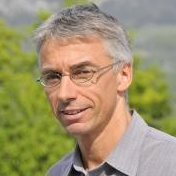Advances in Geographic Object-Based Image Analysis (GEOBIA)
A special issue of Remote Sensing (ISSN 2072-4292).
Deadline for manuscript submissions: closed (15 July 2014) | Viewed by 216981
Special Issue Editors
Interests: geographic object-based image analysis (GEOBIA); airborne thermography; the remote sensing of urban energy efficiency; multiscale analysis
Special Issues, Collections and Topics in MDPI journals
Interests: GIS; remote sensing; spatial analysis and GIS-based spatial decision support systems; object-based image processing
Special Issues, Collections and Topics in MDPI journals
Special Issue Information
Dear Colleagues,
This Special Issue of Remote Sensing focuses on innovative, novel, and leading-edge advances in Geographic Object-Based Image Analysis (GEOBIA) research, theories, methods, and applications. The Special Issue also invites discussion regarding future research trends.
GEOBIA has been described as a sub-discipline of GIScience devoted to developing automated methods of partitioning high-resolution, remote-sensing imagery into meaningful image-objects, and assessing their characteristics through scale. At its most fundamental level, GEOBIA involves image-segmentation, attribution, classification, and the ability to query and link image-objects in space and time within an Earth-centric framework. As a result, GEOBIA is increasingly recognized as an evolving integrative Geospatial paradigm that builds on concepts incorporated from a broad range of disciplines including: Remote Sensing, Geographic Information Systems (GIS), Image Processing, Knowledge Discovery in Databases (KDD), Geospatial Statistics, Cartography, Photogrammetry, Landscape Ecology, Geography, and many others.
Over the last decade, advances in GEOBIA research have led to four highly successful bi-yearly international GEOBIA conferences (Austria 2006; Canada 2008; Belgium 2010 and Brazil 2012) with a fifth scheduled for 2014 (in Greece), along with countless workshops; four related special journal issues (PERS—2010; RS—2011, JAG—2012; GSRS-IEEE—2013), thousands of peer-reviewed journal papers, and a growing number of books and university theses. There is also a Wiki with many thousands of views, numerous YouTube videos, and more than 20 FOSS (free and open-source software) and commercial software packages from leading remote sensing researchers, teams, and vendors, as well as a growing international community of sophisticated and demanding practitioners and innovators.
In order to highlight recent advances in GEOBIA from this growing community and their evolving body of knowledge, submissions are encouraged to cover a broad range of topics, which may include, but are not limited to, the following activities:
- Algorithm development, automation, implementation, and validation
- Challenges related to multi-sensor/data integration and calibration
- Change detection and monitoring
- Classification/error assessment, uncertainty, statistical analysis
- Data processing/mining methods
- Integrative technologies/platforms
- Large area applications, i.e., regions, countries, continents
- Multi-disciplinary case studies
- Ontologies and classification
- Paradigm development, epistemologies
- Rule-set sharing, adaptation, integration, error-tracking, and responsibility
- Scale issues, i.e., resampling, hierarchical analysis, MAUP
- Training/testing sample collection and social engagement with VGIs and the GeoWeb
- Visualization issues and applications
Prof. Dr. Thomas Blaschke
Guest Editors
Manuscript Submission Information
Manuscripts should be submitted online at www.mdpi.com by registering and logging in to this website. Once you are registered, click here to go to the submission form. Manuscripts can be submitted until the deadline. All submissions that pass pre-check are peer-reviewed. Accepted papers will be published continuously in the journal (as soon as accepted) and will be listed together on the special issue website. Research articles, review articles as well as short communications are invited. For planned papers, a title and short abstract (about 100 words) can be sent to the Editorial Office for announcement on this website.
Submitted manuscripts should not have been published previously, nor be under consideration for publication elsewhere (except conference proceedings papers). All manuscripts are thoroughly refereed through a single-blind peer-review process. A guide for authors and other relevant information for submission of manuscripts is available on the Instructions for Authors page. Remote Sensing is an international peer-reviewed open access semimonthly journal published by MDPI.
Please visit the Instructions for Authors page before submitting a manuscript. The Article Processing Charge (APC) for publication in this open access journal is 2700 CHF (Swiss Francs). Submitted papers should be well formatted and use good English. Authors may use MDPI's English editing service prior to publication or during author revisions.
Keywords
- integration of GIS and remote sensing
- GEOBIA
- geographic information science
- sustainable landscapes
- energy landscapes
- smart spaces
- geospatial analysis
- landscape ecology
- geoinformatics
Benefits of Publishing in a Special Issue
- Ease of navigation: Grouping papers by topic helps scholars navigate broad scope journals more efficiently.
- Greater discoverability: Special Issues support the reach and impact of scientific research. Articles in Special Issues are more discoverable and cited more frequently.
- Expansion of research network: Special Issues facilitate connections among authors, fostering scientific collaborations.
- External promotion: Articles in Special Issues are often promoted through the journal's social media, increasing their visibility.
- e-Book format: Special Issues with more than 10 articles can be published as dedicated e-books, ensuring wide and rapid dissemination.
Further information on MDPI's Special Issue policies can be found here.
Related Special Issue
- Geographic Object-Based Image Analysis (GEOBIA) in Remote Sensing (3 articles)






